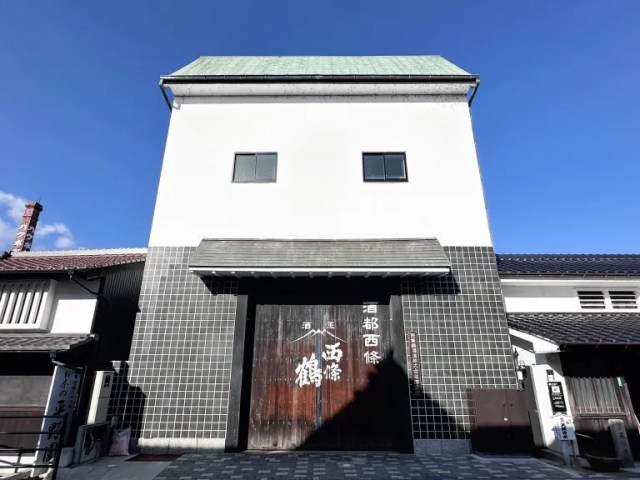
Stepping into sake history in Saijo.
It’s said that the three great sake-producing towns in Japan are Hyogo Prefeture’s Nada, Kyoto’s Fushimi, and Hiroshima Prefecture’s Saijo. Our Japanese-language reporter Mari Morimoto, who grew up in Osaka, near Kyoto, had heard of Fushimi, but being a relative sake neophyte she didn’t know anything about Saijo. Even though she’d visited Hiroshima in the past, she’d been unaware of its sake-making heritage.
So to fill in this gap she headed to Saijo sake brewery Saijo Tsuru to take part in their special “Tales of the Sake Brewery Experience Tour.” In doing so she learned just how deep the world of sake is, and how the final product is affected by the traditions, ingredients, weather conditions and production process, plus the passion of the people who make it. And though Mari took the tour in Japanese, they offer tours in English too.
Saijo, or Saijo-cho, to use its official name, is part of Higashi Hiroshima City, which is two towns to the east of Hiroshima City. The area’s sake-brewing roots go back to the Meiji era (1868-1912), and currently there are seven sake breweries operating in Saijo. Saijo Tsuru itself was founded in the Meiji era, and the brewery and main company building have been standing ever since. They’re now designated as tangible cultural properties by the Japanese government in recognition of their historical significance.
Mari’s visit coincided with the production of Saijo Tsuru’s top-grade junmai daiginjo Shinzui, made with no additives and rice that has been milled to at least 50 percent, using the most flavorful part of the grain at its core. If you tour the brewery during this time, they’ll even send you a bottle of Shinzui once the batch is ready!
Just walking along the hall from the main entrance to the brewing area, there’s a palpable atmosphere of history, with classical architectural styles on display and an earthenware floor. The tour starts with an explanation of the history of the town and brewery. Saijo Tsuru’s setup is a mix of modern machinery and traditional wooden equipment, showing their desire to continue doing some things the old-fashioned way even while making adopting modern methods to boost quality-control and efficiency.
The koji muro left an especially deep impression on Mari. This is where the koji is cultivated. Koji is a special kind of bacteria that forms on rice, and it’s an essential part of the fermentation process used in making sake.
In the koji muro, koji spores are sprinkled on steamed rice, and a constant temperature and humidity are maintained so that more koji will grow. Double-doors lead into the room in order to help maintain the interior conditions, but the brewers still perform regular checks to make sure the koji is developing as needed, even feeling it with their hands to derive a sense of its readiness from the texture.
By the way, Saijo Tsuru strictly forbids anyone from bringing natto (fermented soybeans) into the brewery! They even ask that visitors refrain from eating natto in the morning before their tour, despite natto being a common breakfast food in Japan. That’s because the bacteria present in natto and required for its fermentation are especially hearty, even after you’ve finished eating it and washed your hands If someone enters the brewery with trace amounts of natto bacteria, it could spread to the koji, making it unusable for sake brewing.
Once the koji is ready, it’s combined with water to form a mixture called the shubo, or “sake mother.” Then rice, additional water, and more koji are added to create the moromi, or mash, which will develop into the genshu, sake in a non-diluted form.
Like we mentioned earlier, during Mari’s visit Saijo Tsuru was brewing the new batch of Shinzui and so she got to see its mash. As she approached the tank, a strong sake aroma wafted towards her, and when she got closer, she could hear fizzing and lightly popping sounds.
Of course, if you’re interested enough in sake to tour a brewery, you’d probably also like to drink some sake while you’re there, so at the end of the tour, there’s a tasting session! Mari was presented with three different kinds of Saijo Tsuru sake to sample, and the staff is happy to provide even more varieties at their on-site bottle shop, which Mari was glad to take them up on.
With its coastal location, Hiroshima is famous for oysters and other kinds of seafood, and its regional cooking sometimes exhibits some strong flavors. Mari feels like Saijo Tsuru’s sake is brewed to pair well with the local cuisine, and she’d especially like to have a cup while dining on nice, thick cuts of sashimi or a moist grilled fish fillet.
Two of her personal favorites, out of the varieties she tried, were the Tojinyukonmuroka, which is a karakuchi (dry) sake, but still retains a mellow sweetness from the rice, and the lighter, more refreshing Daichi no Kaze, which she feels would pair well with just about any kind of food. Both of them are junmai sake, made with no artificially added alcohol or other additives.
▼ Tojinyukonmuroka on the left, Daichi no Kaze in the middle
Seeing the many steps in the process, Mari had a sense that sake-brewing really is a crystallization of the carefully cultivated skills and experience of the brewer, combined with the blessings of the earth, water, and even air. And now that she knows how good Saijo’s sake is, she’ll be sure to have some whenever she’s in Hiroshima or spots it on the men or store shelf elsewhere in Japan.
Brewery information
Saijo Tsuru / 西條鶴
Address: Hiroshima-ken, Higashi Hiroshima-shi, Saijo Honmachi 9-17
広島県東広島市西条本町9-17
Website
English tour information
Related: Tales of the Sake Brewery Experience Tour (includes schedules and pricing)
Photos ©SoraNews24
[ Read in Japanese ]

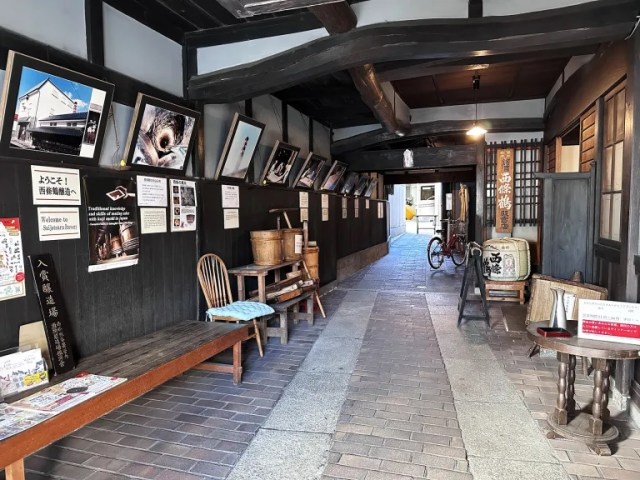
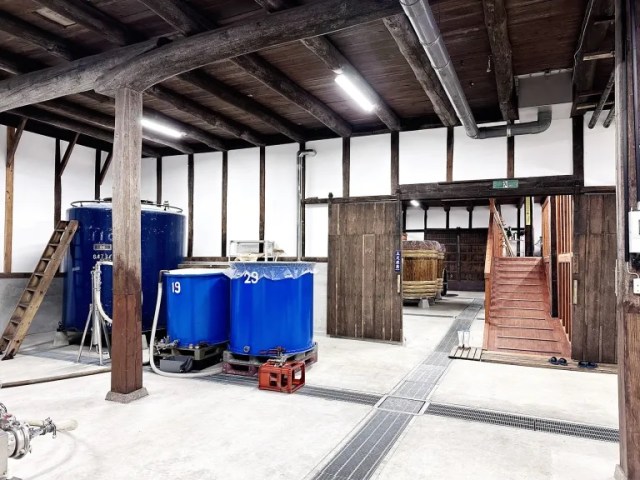
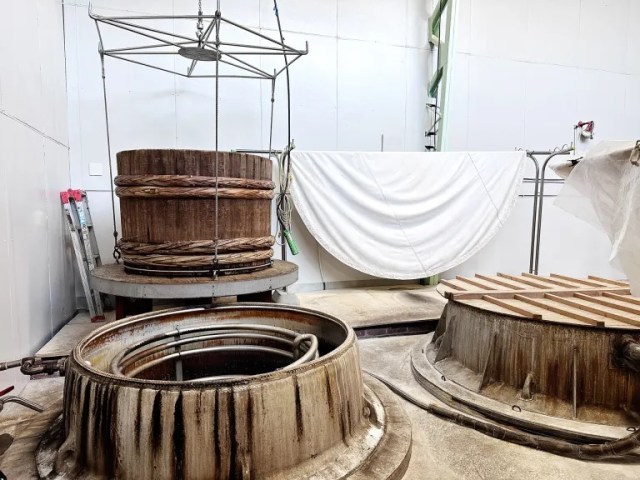
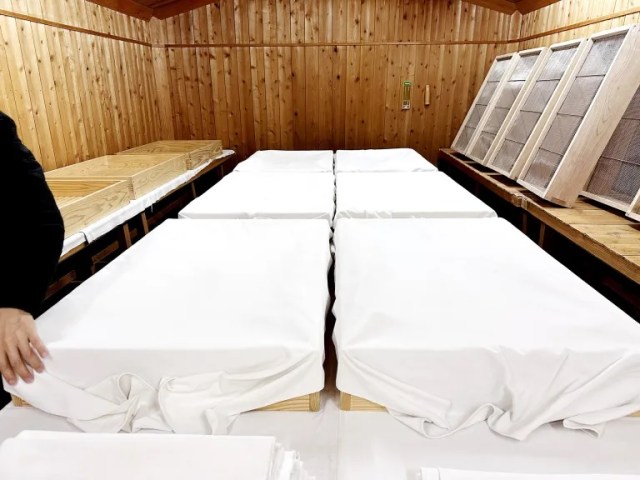
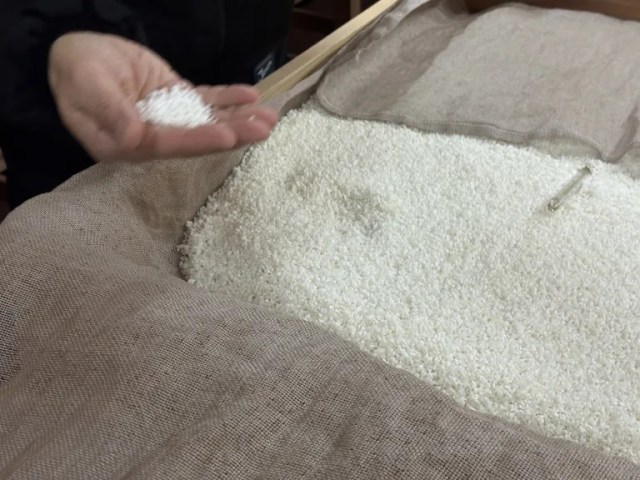
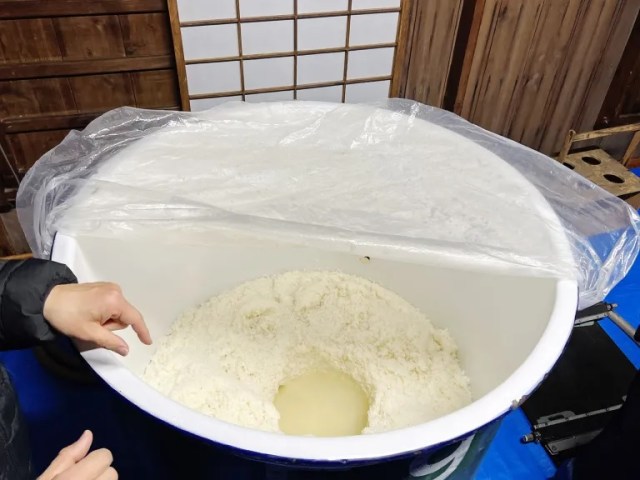
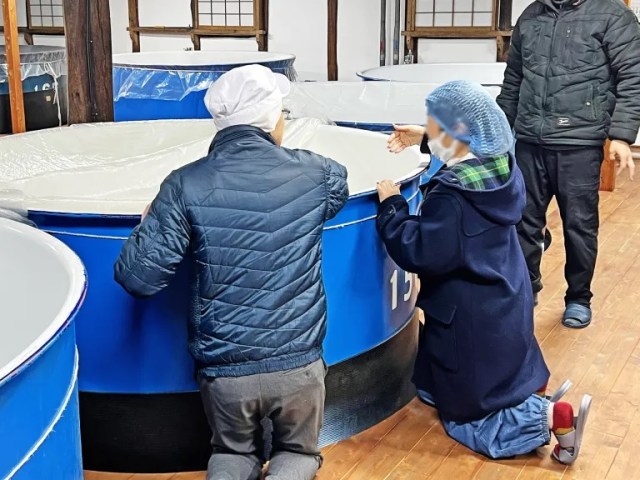

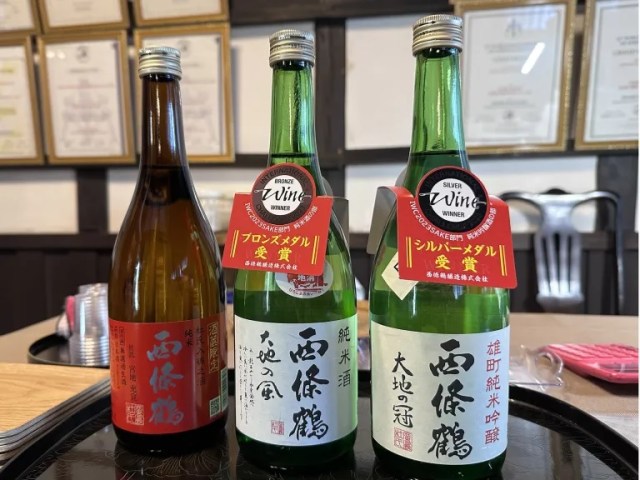
 Muji is selling sake, and it’ll make drinkers feel good in more ways than one
Muji is selling sake, and it’ll make drinkers feel good in more ways than one Japanese sake brewed to pair with cocoa cigarettes
Japanese sake brewed to pair with cocoa cigarettes 348-year-old sake brewery’s newest creation: A special sake just to drink with ramen!
348-year-old sake brewery’s newest creation: A special sake just to drink with ramen! Many young Japanese people aren’t drinking sake these days
Many young Japanese people aren’t drinking sake these days Why is it so hard to find hot sake in convenience stores in Japan?
Why is it so hard to find hot sake in convenience stores in Japan? How to order snacks on a Shinkansen bullet train in Japan
How to order snacks on a Shinkansen bullet train in Japan Hello, cosmetics! Clinique teams up with Hello Kitty this summer for first-time collaboration
Hello, cosmetics! Clinique teams up with Hello Kitty this summer for first-time collaboration Demon Slayer: Kimetsu no Yaiba gets new roller coaster attractions and food at Universal Studios Japan
Demon Slayer: Kimetsu no Yaiba gets new roller coaster attractions and food at Universal Studios Japan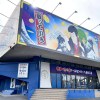 A visit to the best UFO catcher arcade in the universe!
A visit to the best UFO catcher arcade in the universe! To combat declining birth rate, Japan to begin offering “Breeding Visas” to foreigners
To combat declining birth rate, Japan to begin offering “Breeding Visas” to foreigners Spirited Away train station and submerged tracks attract Ghibli fans around Japan
Spirited Away train station and submerged tracks attract Ghibli fans around Japan Daiso DIY dessert! 100 yen store’s super-easy mochi sweets kit is our new hero
Daiso DIY dessert! 100 yen store’s super-easy mochi sweets kit is our new hero How should you respond when a Japanese person gives you a compliment?
How should you respond when a Japanese person gives you a compliment? New samurai glasses are Japan’s latest weird must-have souvenir
New samurai glasses are Japan’s latest weird must-have souvenir McDonald’s adds new watermelon frappe and fruity macaron to its menu in Japan
McDonald’s adds new watermelon frappe and fruity macaron to its menu in Japan Nintendo history you can feel – Super NES, N64, and GameCube controllers become capsule toys
Nintendo history you can feel – Super NES, N64, and GameCube controllers become capsule toys “The most Delicious Cup Noodle in history” – Japan’s French Cup Noodle wins our heart【Taste test】
“The most Delicious Cup Noodle in history” – Japan’s French Cup Noodle wins our heart【Taste test】 Starbucks releases a cute Frappuccino and Unicorn Cake…but not in Japan
Starbucks releases a cute Frappuccino and Unicorn Cake…but not in Japan Kyoto Tower mascot termination reveals dark side behind cute Japanese characters
Kyoto Tower mascot termination reveals dark side behind cute Japanese characters McDonald’s Japan’s Soft Twist Tower: A phantom ice cream only sold at select branches
McDonald’s Japan’s Soft Twist Tower: A phantom ice cream only sold at select branches Yabai Ramen: What makes this Japanese ramen so dangerous?
Yabai Ramen: What makes this Japanese ramen so dangerous? Finally! Nintendo Japan expands Switch 8-bit controller sales to everybody, Online member or not
Finally! Nintendo Japan expands Switch 8-bit controller sales to everybody, Online member or not Japanese government wants to build luxury resorts in all national parks for foreign tourists
Japanese government wants to build luxury resorts in all national parks for foreign tourists 10 things you should buy at 7-Eleven in Japan
10 things you should buy at 7-Eleven in Japan Studio Ghibli releases anime heroine cosplay dresses that are super comfy to wear
Studio Ghibli releases anime heroine cosplay dresses that are super comfy to wear Woman charged for driving suitcase without a license in Osaka
Woman charged for driving suitcase without a license in Osaka Studio Ghibli unveils My Neighbour Totoro miniature house model
Studio Ghibli unveils My Neighbour Totoro miniature house model Kyoto experiencing problems with foreign tourists not paying for bus fares, but not on purpose
Kyoto experiencing problems with foreign tourists not paying for bus fares, but not on purpose Fighting mild hunger with a Japanese soda that turns into jelly in the stomach【Taste test】
Fighting mild hunger with a Japanese soda that turns into jelly in the stomach【Taste test】 Studio Ghibli’s Howl’s Moving Castle tapestry unveiled in Japan for first time
Studio Ghibli’s Howl’s Moving Castle tapestry unveiled in Japan for first time McDonald’s new Happy Meals offer up cute and practical Sanrio lifestyle goods
McDonald’s new Happy Meals offer up cute and practical Sanrio lifestyle goods Sales of Japan’s most convenient train ticket/shopping payment cards suspended indefinitely
Sales of Japan’s most convenient train ticket/shopping payment cards suspended indefinitely Sold-out Studio Ghibli desktop humidifiers are back so Totoro can help you through the dry season
Sold-out Studio Ghibli desktop humidifiers are back so Totoro can help you through the dry season Japanese government to make first change to romanization spelling rules since the 1950s
Japanese government to make first change to romanization spelling rules since the 1950s Foreigner’s request for help in Tokyo makes us sad for the state of society
Foreigner’s request for help in Tokyo makes us sad for the state of society Ghibli founders Toshio Suzuki and Hayao Miyazaki contribute to Japanese whisky Totoro label design
Ghibli founders Toshio Suzuki and Hayao Miyazaki contribute to Japanese whisky Totoro label design Doraemon found buried at sea as scene from 1993 anime becomes real life【Photos】
Doraemon found buried at sea as scene from 1993 anime becomes real life【Photos】 Tokyo’s most famous Starbucks is closed
Tokyo’s most famous Starbucks is closed Princesses, fruits, and blacksmiths: Study reveals the 30 most unusual family names in Japan
Princesses, fruits, and blacksmiths: Study reveals the 30 most unusual family names in Japan How much difference does the choice of mold make in fermenting food?
How much difference does the choice of mold make in fermenting food? Nifty Japanese rice wine kit lets you brew your own tasty sake in the comfort of your own home
Nifty Japanese rice wine kit lets you brew your own tasty sake in the comfort of your own home Sake on ice! Akita sake brewery has special brewing process that is spinning up tons of interest
Sake on ice! Akita sake brewery has special brewing process that is spinning up tons of interest We tour Onomichi, Hiroshima, where old meets new and a whole lot more
We tour Onomichi, Hiroshima, where old meets new and a whole lot more Boxed sake is now a thing in Japan, thanks to one of the oldest breweries in the country
Boxed sake is now a thing in Japan, thanks to one of the oldest breweries in the country Triumph lingerie company creates sake underwear using fabric made with Japanese rice wine
Triumph lingerie company creates sake underwear using fabric made with Japanese rice wine Outdoor brand Logos teams up with Aichi sake brewery to make your camping more boozy
Outdoor brand Logos teams up with Aichi sake brewery to make your camping more boozy Foo Fighters unveil an exclusive new Japanese sake
Foo Fighters unveil an exclusive new Japanese sake Hit anime Your Name inspires new sake, blessed by priests in the shrine that appears in the movie
Hit anime Your Name inspires new sake, blessed by priests in the shrine that appears in the movie For millions of people, anime actress Hiromi Tsuru was more than a voice, she was “by our side”
For millions of people, anime actress Hiromi Tsuru was more than a voice, she was “by our side” Japanese sake breaks new ground with a variety specially blended to pair well with chocolate
Japanese sake breaks new ground with a variety specially blended to pair well with chocolate Limited run of commemorative Ed Sheeran sake on sale from 8 April
Limited run of commemorative Ed Sheeran sake on sale from 8 April Hayao Miyazaki’s first directorial work adds flavour to a special Japanese sake
Hayao Miyazaki’s first directorial work adds flavour to a special Japanese sake Yoghurt Sake is the newest Japanese KitKat we need to get our hands on right now
Yoghurt Sake is the newest Japanese KitKat we need to get our hands on right now Japanese sake brewery helps to create a stunning bento meal
Japanese sake brewery helps to create a stunning bento meal Gekkeikan releases new alcohol-free Japanese daiginjo sake
Gekkeikan releases new alcohol-free Japanese daiginjo sake
Leave a Reply